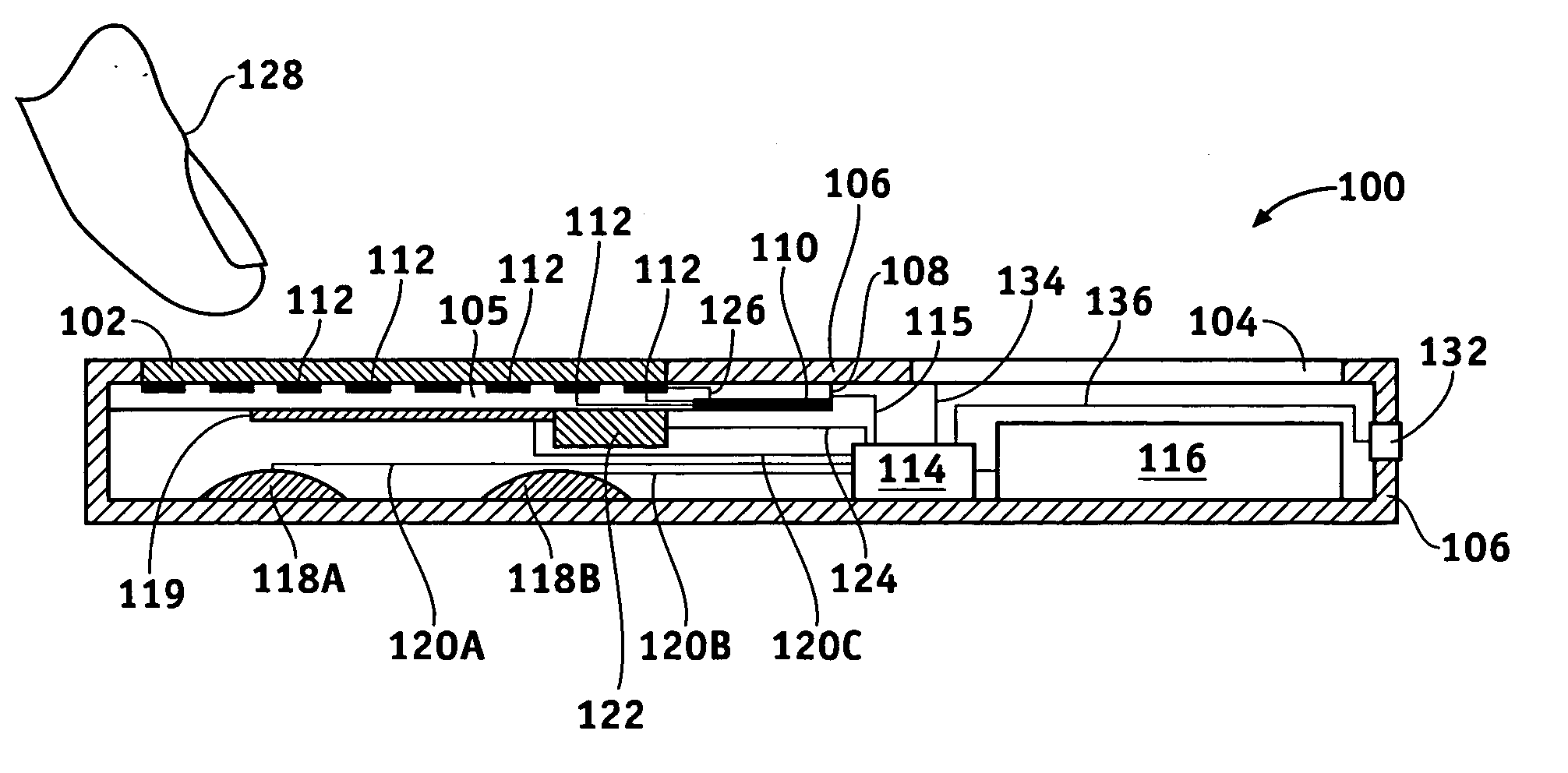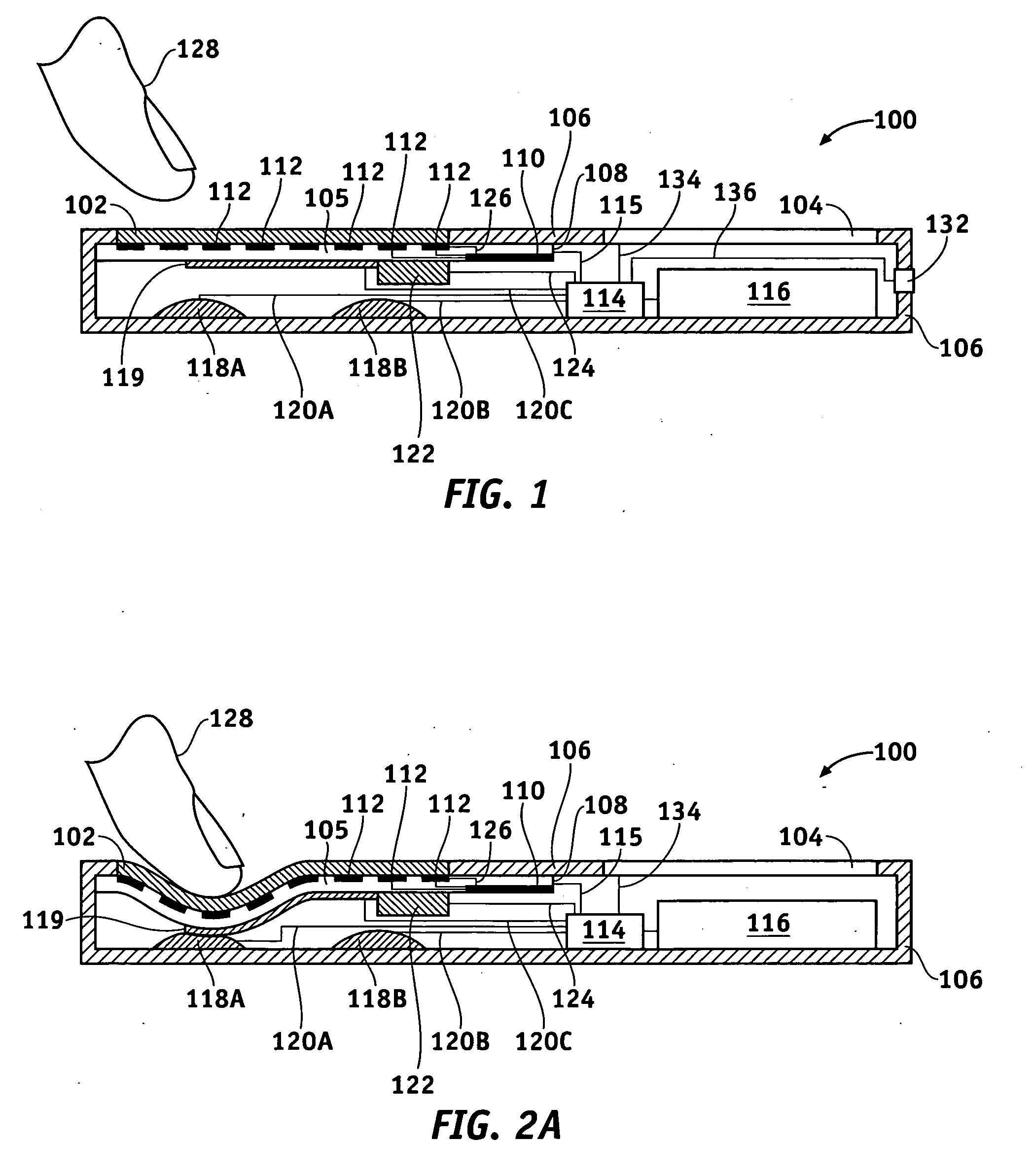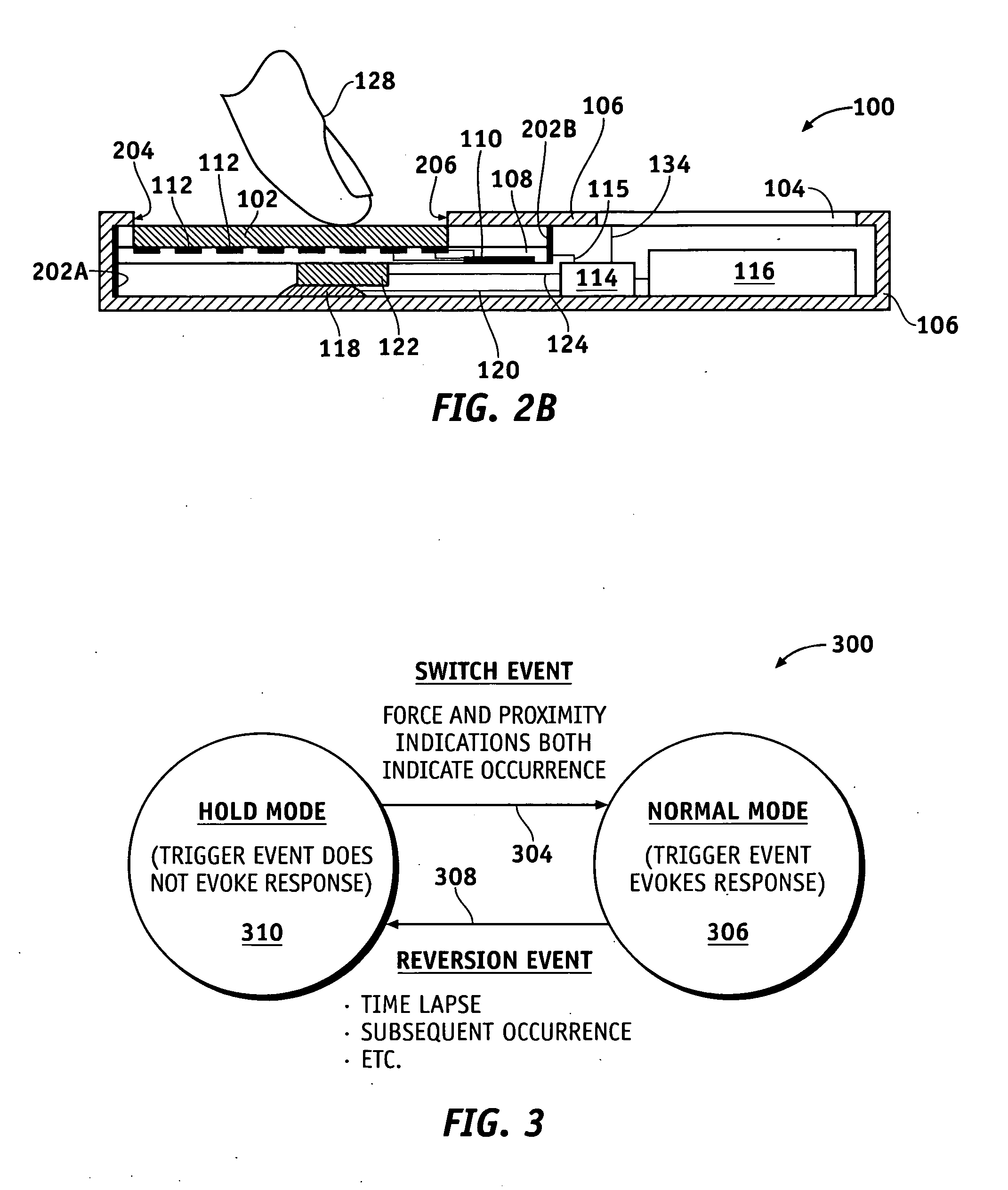Methods and systems for implementing modal changes in a device in response to proximity and force indications
a technology of proximity and force, applied in the field of methods, can solve the problems of disrupting the player's operation, affecting the operation of the player, and affecting the operation of the sensor
- Summary
- Abstract
- Description
- Claims
- Application Information
AI Technical Summary
Benefits of technology
Problems solved by technology
Method used
Image
Examples
Embodiment Construction
[0015] The following detailed description is merely exemplary in nature and is not intended to limit the invention or the application and uses of the invention. Furthermore, there is no intention to be bound by any expressed or implied theory presented in the preceding technical field, background, brief summary or the following detailed description.
[0016] According to various exemplary embodiments, the operating mode of a media player, portable computer, wireless telephone or other device is switched in response to an occurrence of the user input being identified by both a proximity indication and a force indication. The proximity indication is provided by one or more proximity sensors, such as a capacitive, resistive, inductive, optical, infrared, ultrasound, sonic or other proximity sensor and is produced as a digital or analog function of the proximity of a user input object (e.g. a stylus, the user's finger or hand or the like). The force indication is provided by one or more f...
PUM
 Login to View More
Login to View More Abstract
Description
Claims
Application Information
 Login to View More
Login to View More - R&D
- Intellectual Property
- Life Sciences
- Materials
- Tech Scout
- Unparalleled Data Quality
- Higher Quality Content
- 60% Fewer Hallucinations
Browse by: Latest US Patents, China's latest patents, Technical Efficacy Thesaurus, Application Domain, Technology Topic, Popular Technical Reports.
© 2025 PatSnap. All rights reserved.Legal|Privacy policy|Modern Slavery Act Transparency Statement|Sitemap|About US| Contact US: help@patsnap.com



